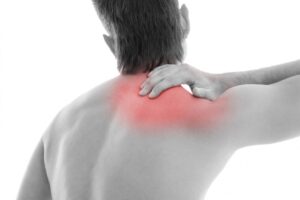
Bursa are fluid filled sacs located throughout the body near main joints. They help with proper gliding of joints and reduce friction during movement. When bursa become inflamed, bursitis occurs.
Causes of Bursitis
There are several causes but the most common include trauma, infections, or preexisting conditions, such as gout, which cause crystals to form inside the bursa which cause inflammation.
Trauma
Trauma can cause chronic or acute bursitis. The Chronic form is due to repetitive motions and most commonly happens among athletes or those who work in fields where repetitive motions are necessary such as painters. The bursitis form is caused by accidental trauma, such as banging your elbow on a table, wall, or door.
Infections
There are some bursae, such as in the elbow, that are close to the skin and susceptible to infection, this is called septic bursitis. Those most at risk include individuals with diabetes, alcoholism, kidney conditions, suppressed immune functions, or those with a wound over where a bursa is located.
Symptoms of Bursitis
Stiffness, tenderness, or swelling may occur around the affected bursa. In some cases such as with bursitis in the elbow, the joint may swell and be warm to the touch.
Shoulder
Shoulder bursitis is most commonly associated with a rotator cuff injury and can lead to impingement syndrome, a condition where shoulder range of motion (ROM) is severely limited. Pain is usually felt in the front or side of the shoulder and there is difficulty with normal daily activities such as putting on a coat can be painful. It is usually the result of repetitive motions such as with painting, swimming, or baseball.
Elbow
Olecranon bursitis occurs in the elbow joint and is most often the result of trauma or repetitive motions, as with tennis, golf, or a desk job where one leans on their elbow a lot.
Knee
The most common bursitis of the knee are prepatellar and anserine. Prepatellar occurs in the knee cap and is also known as carpet layer’s knee and most commonly associated with kneeling too much (as is the case with carpet layer’s hence the name). Anserine bursitis occurs in the inner knee and affects tendons of the knee. It is most common among long distance runners and overweight elderly women with osteoarthritis.
Ankle
This occurs mostly among athletes, those who wear high heels, and those whose professions require prolonged walking. The most common types are Retrocalcaneal and retroachilles bursitis, both of which affect the top of the heel and can be associated with Achilles tendonitis.
Hip
There are two main bursa in the hip and each cause different types of pain – trochanteric bursa and the ischial bursa. Trochanteric bursitis can be felt in the outer hip/glute area and most commonly occurs in overweight middle aged women. Ischial bursitis is also known as weaver’s bottom and is felt in the upper glute, outer thigh, and knee.
Prevention of Bursitis
Since it is brought on most by repetitive use, rest is usually the best way to help prevent any issues. A regular exercises program can help keep muscles strong and working effectively. If you feel tenderness, you can apply ice, take NSAIDs, or stretch affected areas. If feelings persist, seeing a doctor and catching it early can prevent further discomfort and issues.
In need of Bursitis Rehabilitation? Schedule an Appointment Today!
If you have any questions, or want a consultation with a professional, feel free to call, or schedule an appointment online at any of our Bergen County or Passaic County offices in New Jersey. Choose from Glen Rock, Franklin Lakes, Fair Lawn, Ho-ho-kus/Ridgewood, and/or Clifton – we make it possible for you to visit any of our offices at your convenience.



